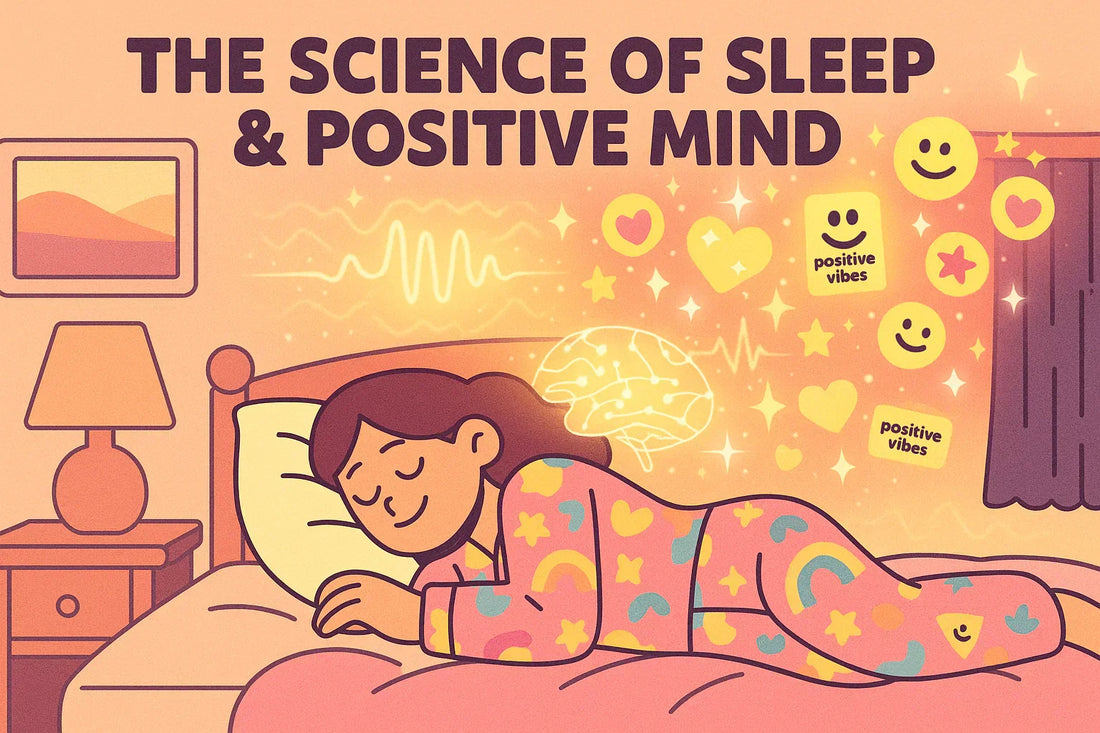Why quality sleep is the most underrated happiness habit—and how to build a bedtime that lifts your mood.
The Science of Sleep & a Positive Mind

Sleep, Mood, and Your Brain—The Short Version
- Sleep regulates emotion. Well-rested brains manage stress better and bounce back faster from daily hassles.
- Positive outlook rises with rest. Adequate sleep supports attention, gratitude, and optimism—core ingredients of “good vibes.”
- Comfort matters. Calming routines and comfortable sleepwear cue the body that it’s safe to relax.

What’s Happening While You Sleep
1) Circadian Rhythm
Your internal clock syncs to light and darkness. Bright light in the morning helps you feel alert; softer light at night tells your brain to wind down.
2) Sleep Stages (NREM & REM)
NREM sleep restores the body and consolidates facts; REM sleep supports creativity and processes emotions. Skimp on either, and you’ll likely feel foggier and less resilient the next day.
3) Neurochemical Balance
Healthy sleep patterns support balanced levels of serotonin (well-being), dopamine (motivation), and melatonin (sleep timing). When sleep is irregular, mood can swing more easily.

How Better Sleep Fuels Positive Thinking
- Sharper “brakes” on stress. Rested prefrontal circuits help regulate emotional reactions, so frustrations feel smaller.
- More cognitive flexibility. You’re better at reframing setbacks and noticing silver linings.
- Higher reward sensitivity. With decent sleep, simple pleasures (a sunny walk, a cute pajama set) feel more rewarding.
- Social glow-up. People read your face and tone more positively when you’re not sleep-deprived.

A Calming, Science-Backed Night Routine
Think of bedtime as a gentle runway: each step lowers arousal and signals safety.
- Same time, most nights. Consistency is king for your circadian clock.
- Dim to unwind. Lower overhead lights 60–90 minutes before bed; aim for warm, softer lamps.
- Cool, quiet, dark. A slightly cooler room (and breathable fabrics) helps your core temperature drop—nature’s sleep cue.
- Screen hygiene. If you must scroll, use night mode and set a “screens off” time.
- Light ritual. Tea, skincare, 3-line gratitude, or a short stretch—keep it repeatable.
- Comfort cue. Soft, well-fitting sleepwear tells your nervous system, “we’re safe.” Your favorite moodwear becomes a tiny, reliable happiness anchor.
Color, Comfort, and Positive Cues
Color primes emotion. Cool blues and gentle greens can feel calming; joyful pops (pink, peach, yellow) can lift energy without overstimulating when used as accents. Fabrics that feel soft against skin reduce micro-irritations that keep the body alert. The takeaway: choose sleepwear that feels good and makes you smile in the mirror—both are valid “neural nudges” toward positive mood.

Build Your “Good Vibes” Sleep Toolkit
- 15-minute wind-down playlist (same order nightly).
- Two-scent rotation (calming candle or pillow spray) so your brain links scent with sleep.
- Cozy moodwear reserved only for bedtime to strengthen the association.
- Morning light ritual (open blinds or a quick step outside) to lock in tonight’s timing.
This article is informational and not medical advice. If sleep issues persist, consult a qualified professional.
Final Thought
Positive thinking doesn’t start in your head—it starts in your habits. Honor your sleep, curate a soothing ritual, and wrap yourself in comfort. As we like to say at QINCOCO: Just want you to be happy.


